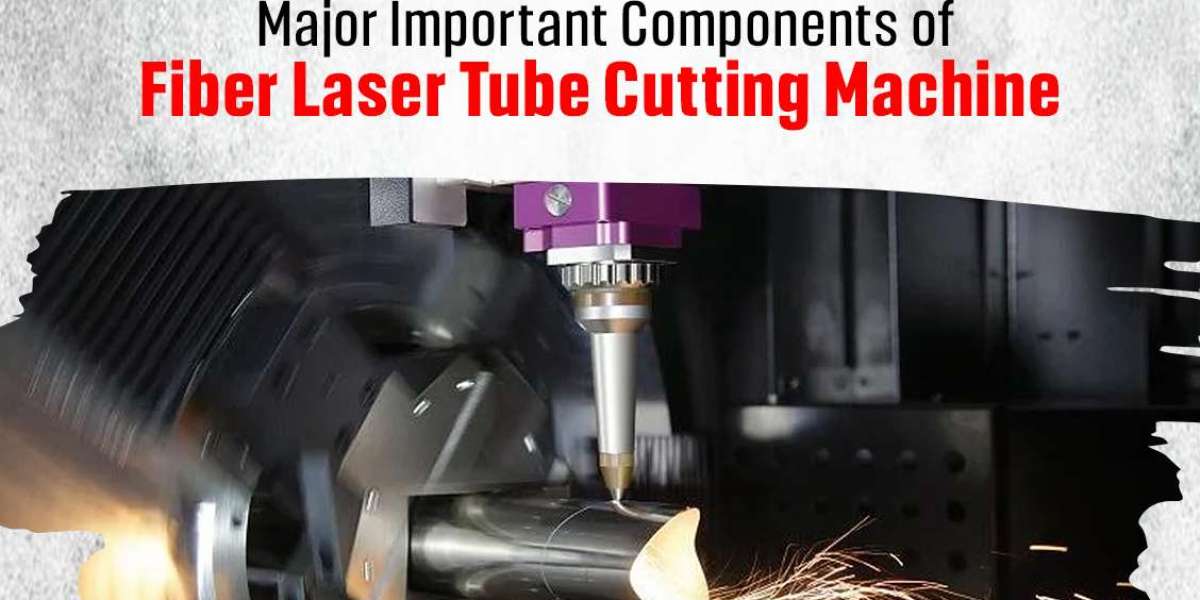A fiber laser tube cutting machine is a sophisticated and valuable equipment for todays fabrication industry dealing with the cutting of metal tubes and profiles. These machines are so essential in the operations of industries like automotive, aerospace, as well as construction since they are accurate and versatile machines. This article will describe the primary characteristics of fiber laser tube cutting machines as well as explain the work of their components.
Technical Specifications
Model: D-SOAR Tube Cutting (3 Chucks)
Laser Power: Available in 3 kW to 30 kW
Tube Material: Suitable for stainless steel, carbon steel, and other materials. Capable of cutting round, square, rectangular, angle steel, U shape, I shape and other special tubes.
Cutting Speed: Dependent on the type and thickness of the metal being cut.
Tube Length: Available in 3000mm and 6000mm options.
Key Components and Their Functions
Chuck
Description: In the fiber laser tube cutting machine there are two chucks through which the tubular product is placed for cutting.
Function: These chucks make combined rotational movement parallel to the axis and thus provide axial and radial feed by the laser head to cut. This makes the cutting to be constant and precise especially when cutting intricate shapes and sizes.
Fiber Laser Source
Description: There is an IPG laser source established to hold a high beam quality.
Function: The laser source provided by the IPG is favorable in terms of beam quality, which enables all the operations to be performed rapidly and accurately. These produce higher power densities and are therefore more efficient in cutting and have higher accuracy for a variety of materials and thicknesses.
Reducer
Description: A transmitting device that adjusts the speed and determines the amount of torque produced.
Function: The reducer manages the speed and provides a controlled torque from a motor to provide efficiency and stability. This component is important to ensure that the cutting process is accurate and time-efficient.
Servo Motor
Description: An electric motor is another type of motor that is also silent and the one that runs the machine.
Function: The servo motor has a constant torque at any speed hence improving the stability of the machine that it is a part of. Its high accuracy is required to ensure close control of the cutting head and the accuracy of the movements is vital to deliver the cuts in a consistent manner and high quality.
Nesting Software
Description: Software for controlling the cutting process developed based on Windows.
Function: The CAM nesting software helps to program since it will help to reduce the amount of wastage of the material. It plays a crucial role in converting the instructions provided to the designer concerning the kind of cut to be made into precise instructions that can improve efficiency and productivity.
Rack Pinion
Description: An instrument employed in advancing the methods efficiency and precision in transmitting information.
Function: The rack and the pinion enhance efficiency in the transmission of movement by the head cutter and reduce the backlash. The system of guide rails permits controlled and precise travel of the print head and of the carriage, the dust extracting system is used separately and removes dust at once.
Detailed Analysis of Fiber Laser Tube Cutting Machine Components
Fiber Laser Source
Specifically, the fiber laser source is one of the most crucial parts that define the cutting of the machine. The laser source in this machine provides a good beam quality and power density that make it set different materials on this machine with precision. This source translates electrical power to laser light and directs it to the surface of the material for the cutting process. Fiber laser source stands out when it comes to cutting operation due to the stability and efficiency of the machines high-precision cutting tasks.
Laser Cutting Head
The laser cutting head contains an offering of optics to control and focus the laser beam on the material that is to be cut. It also consists of a nozzle that blows assist gases like oxygen, nitrogen or air to the cutting region. These gases also assist in the cutting process since they remove molten material and reduce its oxidation making the cut clean. To be more beneficial and precise, another feature that adds up to the cutting heads adaptability is its capability to modify the focus position depending on the material thickness.
Workpiece Holding and Manipulation System
This is a Workpiece Holding and Manipulation system where magnetic force output to the workpiece is employed to hold the workpiece in position as well as for manipulation. This consists of chucks, clamps, or rollers that grip and secure the tube to ensure it does not move when cutting. It can also rotate the tube and the longitudinal motion of the tube allows certain parts of the tubes to be placed in the cutting position. A degree of holding and movement is well required in order to get accurate cuts, especially while cutting an elaborate shape or having to make different parts out of one tube. This component plays a role in ensuring that the workpiece is held firmly on the machine and in the correct position so as to enable accurate cutting.
CNC Controller
The CNC controller is another segment of the fiber laser tube cutting machine as it contains the mind of the entire machine. It controls the execution of the cutting program and the means for moving the cutting head and workpiece. The latest technology in CNC includes features such as monitoring, auto adjustment, or interface with CAD/CAM software reducing the product cycle from design to manufacturing. The CNC controller helps the laser make the precise path that is required so as to shape the particular contour needed in cutting operations.
Cooling System
This subassembly is pivotal more specifically for cooling the laser source as well as other parts of the laser cutting system. It is also to be noted that fiber lasers produce large amounts of heat that must be controlled in order to prevent degrading the laser and for the sake of operation consistency. The Chiller unit is another component of the cooling system and allows the circulation of coolant through vital parts of the machine so as to prolong its useful life and performance.
Dust and Fume Extraction System
A dust and fume extraction system is a mechanism that is used in industries for the collection, control, and handling of dust and fumes in working areas. Laser cutting of metals leads to the generation of sparks, fumes and metal dusts as well as abrasive particles which is important to be collected to avoid accumulation of dust that affects the efficiency of the machine as well as a clean and effective working environment. The extraction system for fumes involves fans, filters as well as ducts that suck fumes and air together with filters that clean the air. This system aids in the regulation of the environment, essential for the safety of the operator as well as the proper internal working of the components.
Conclusion
Progress in the field of technology means that these machines will build more superior options hence extending its usage in the respective fields. The constant advances in automation, software and Laser technology will lead to higher perimeters of use and thus higher market potential, which means fiber laser tube cutting machines are staple components in the manufacturing industry. The combination of precision, efficiency, and safety ensures that these machines meet the growing demands of precision metal cutting, making them essential for various industrial applications. Reach Business Point International, UAE for more information.








